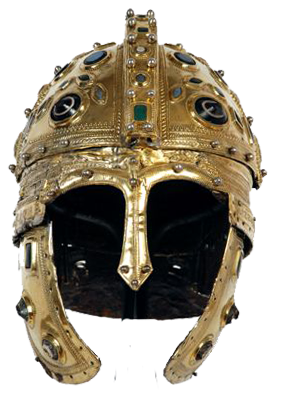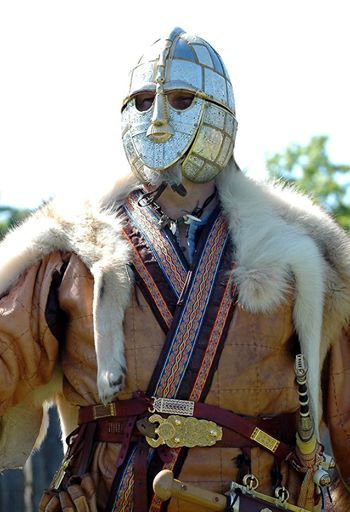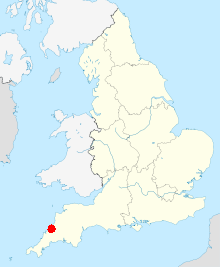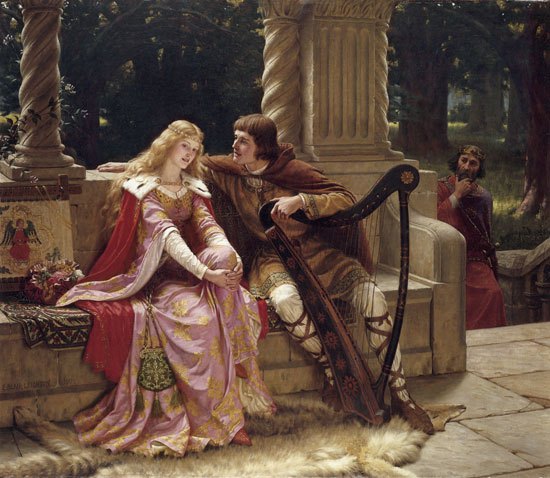The article below “King Arthur: Some Literary, Archaeological and Historical evidence” is written by Periklis Deligiannis and posted in Academia.edu. The posting below is Deligiannis’ first part of the article with the Sarmatian links with King Arthur to be further discussed in later reports in September 2018, September 2019 and September 2020. For more on the links between wider Iranian culture and Europe click this link …
Kindly note that a number of images and accompanying captions inserted below do not appear in Periklis Deligiannis’ original article.
============================================================================
In 407 AD the Romans withdrew their last regular troops from the British provinces. The independent Romano-Britons had to fight hard against the Pict, Irish and Anglo-Saxon barbarians who were besieging their territory. Former Roman Britain was gradually divided into autonomous ‘principalities’ led by warlords. However they tried to keep united their “British kingdom” as they considered their common territory, and mainly to repel the invading Anglo-Saxons who had conquered the Southeast, advancing headlong. It seems that the Britons in order to maintain their unity, elected a military commander (Dux) as a senior politico-military leader, who led the operations against the invaders and took care on preventing infighting. A sequence of inspired Dukes (Voteporix, Vortigern, Ambrosius Aurelianus) led the British resistance. Those who accept Arthur’s historicity usually consider him as one of these Dukes (a theory consider him Aurelianus’ son).

A Late Roman helmet rather of Persian distant origin (design), decorated with semi-gemstones. The Romano-Britons inherited this type together with the rest of the Roman weaponry and military organization (Periklis Deligiannis).
The Briton literary tradition and the archaeological evidence, mainly the Saxon burials, denote that the Anglo-Saxon invasion was halted on the verge of the 5th-6th centuries AD. Many scholars believe that the military action of the legendary king Arthur was the main ‘factor’ for the repulse of the newcomers. However, his historicity is strongly and justifiably disputed. In this series of articles I will deal with some additional literary, archaeological and historical evidence concerning his historicity.
The literary sources on Arthur
The first literary reference to Arthur appears in the Northern Briton epic “Y Goddodin” (“the Votadini” around AD 600) which recounts an attempt of the Votadini people (Celtic Goddodin) of the modern Scottish Lowlands and their allies, to check the advance of the Angles. Some scholars believe that the mention of Arthur in this epic was added later. The first ‘secure’ reference to the legendary commander comes from Nennius in his “History of the Britons” (“Historia Britonnum”, end of 8th century). Nennius’ work was based mostly on the local Briton tradition. Nennius describes the legendary figure as a warlord who repelled the barbarians around the 5th-6th centuries. This was followed shortly after by another reference of Arthur in the “Annales Cambriae” (9th c.). But the author, who developed most of all Arthur’s renowned image as a just and powerful warrior-king, was the Archdeacon of Oxford Geoffrey of Monmouth in his largely mythical “History of the Kings of Britain” (“Historia Regum Britanniae”, AD 1133). Geoffrey relied heavily on the two aforementioned works, and possibly on the local oral tradition. In France, the late medieval chronicler Chretien de Troyes holds an analogous contribution to the Arthurian legend. The later writers of the Arthurian epic circle are based on the works of the last two authors (mostly on Geoffrey’s work and less on Chretien’s) going on to the enrichment of the epic with elements belonging mainly to the Late Middle Ages, such as the Round Table, the quest for the Holy Grail, etc.

In the 5th-6th centuries AD, the Anglo-Saxons brought to Britain many elements of the eastern Scandinavian Proto-Vendel and Vendel cultures, several of which are obvious on their arms and armor, i.e. on their helmets (Sutton Hoo burial, etc.), daggers, swords etc (reconstruction of an Anglo-Saxon warlord wearing a Sutton Hoo-type helmet, by the Historical Association Wulfheodenas) (Periklis Deligiannis). Note: segmented helmets fitted with metallic facemasks were very common in the Sassanian army (Spah), a topic that was addressed in detail in: Farrokh, K., Karamian, Gh., & Kubic, A. (2016). An Examination of Parthian and Sassanian Military Helmets 2nd century BCE – 7th century CE (2016). THE THIRD COLLOQUIA BALTICA-IRANICA, Nov 25-26, Siedlce University.
Modern scholars who do not accept Arthur’s historicity, rely mainly on the fact that he is not mentioned in the main chronicle of the sixth century AD, the chronicle of the Briton churchman Gildas “The Disaster and Conquest of Britain” (“De Excidio et Conquestu Britanniae”, mid-6th century) which deals with the events of the Saxon invasion. They believe that if Arthur really existed and halted the Saxons, his name should be referred by Gildas and not just once or twice. But Gildas does not mention him at all.
In fact this argument is not particularly strong, because during the same period a surprisingly large number of princes and nobles named “Arthur” are witnessed across Great Britain. The preference in this personal name appears suddenly, without any prior, and indicates that these aristocrats and warlords received honorary as infants the name of a politico-military personality who achieved great deeds just a little time before their birth. Concerning the fact that the contemporary Latin-speaking Continental writers do not mention Arthur (another argument of those who do not accept his historicity), this is explained by the fact that after AD 407 Britain is lost from their “vision” and interests. It is rater natural that there is no mention of Arthur in the Continental sources, although some scholars believe that the Briton commander is none other than the British king Riothamus of the “History of the Goths” (6th c.) Riothamus is analyzed to Rigo-tamos according to Fleuriot, meaning “Supreme Ruler” which is indeed the title of the Dux Britanniarum of this age. But for what reasons would Gildas have concealed the achievements of his almost contemporary Arthur?
The Lives of the Briton saints suggest in their texts that Arthur was using the money of the Briton Church to financially support his wars, and he was not distracting them with the consent of the Church. It seems in general that his contemporary Christians did not particularly like him and this may explain why Gildas is silent concerning his hypothetical decisive contribution to repulse the Anglo-Saxons. Geoffrey of Monmouth presented Arthur as a pious Christian king, as he had to be in the 12th century, but this presentation has very little significance. The references to the Christian faith of Arthur’s knights and soldiers are of the same small value. If Arthur was a real person, it is very doubtful that he and most of his men followed orthodox (official Roman) Christianity that had not many followers in Britain. Most British of this era rather remained faithful to the ancient Celtic cults or to the heresy of Pelagianism which was significantly removed from orthodox Christianity. It seems that the Britons who were almost permanently under arms, like Arthur and his men, followed mainly the traditional Celtic religion or the cult of Mithras, i.e. the renowned Iranian and later Roman ‘god of the soldiers’.
 Location of Tintagel in red (Periklis Deligiannis).
Location of Tintagel in red (Periklis Deligiannis).
Archaeological and Historical Evidence
According to Geoffrey of Monmouth, Arthur was born in the fortress of Tintagel, on the north coast of Cornwall. There lived Gorlois, the Duke of Cornwall together with his beautiful wife Ygraine (or Igraine). Another Briton warlord, Uther Pendragon was in love with her. Ygraine responded to the feelings of Uther, who despairing of his love for the beautiful duchess asked the help of Merlin the magician. The latter agreed to help Uther on his sexual intercourse with Ygraine in exchange for the surrendering of the child to be born from their commingling. Uther agreed and Merlin gave to him the form of Ygraine’s husband. Gorlois had reduced his wife to their summer dwelling in Tintagel in order to protect her from Uther. The latter managed to make love to Ygraine, her husband was killed, and the child born in Tintagel, namely Arthur, was delivered to Merlin who later established him to the British throne.
Until recently, scholars did not generally consider Geoffrey’s reference on Arthur’s birth in Tintagel as a worthy one. The ruins at the top of the modern island Tintagel (a coastal cliff of Cornwall) belong to a late medieval fortress that was built a century after the writing of Geoffrey’s History. However, probably the archdeacon knew that Tintagel was a fort of the British Dark Ages and followed the local tradition that placed Arthur’s birth there. The archaeological findings reinforce this view. In the summer of 1983 a series of fires extended on Tintagel, where after burning the vegetation, revealed the foundations of strong fortifications. Excavations in the area revealed several findings of ceramics, based on which, the History of the island was divided into two periods. The first historical phase coincides with the Roman period. The fact that no other pottery was excavated in the region, shows that the Roman government was using Tintagel as a commercial post. This is reinforced by the discovery of a harbor on the island, which continued to be used during the 5th-6th centuries. These centuries are concerning Tintagel’s second period, contemporary with Arthur’s wars. The pottery of the 5th-6th century that was discovered on the island was made in the East Roman Empire, Gaul and North Africa, which denotes that the movement of goods by the Celts of Tintagel increased compared to the Roman period. But the large amounts of the excavated pottery, assume that a strong central government controlled the trade. Due to the historical period, this rather corresponded to a monarch. The discovery of a ditch on the island (which considering its use almost always surrounded walls made of tree trunks in Celtic strongholds) denotes that Tintagel was a fortified trading location. After all it would be dangerous for the local Britons to leave defenseless a natural fortress like Tintagel, because it could be captured by overseas enemies or invaders.
 ‘Tristan and Isolde’ in a classic artwork by Edmund Blair Leighton. Tristan appears in the Arthurian Circle as a worthy knight and a romantic figure as well, but in reality he was a powerful Pict warlord. Dunstan, being his real name, was an historic figure, the champion of the Cruthni (Picts) against the Scottish invaders in Pictavia (Periklis Deligiannis).
‘Tristan and Isolde’ in a classic artwork by Edmund Blair Leighton. Tristan appears in the Arthurian Circle as a worthy knight and a romantic figure as well, but in reality he was a powerful Pict warlord. Dunstan, being his real name, was an historic figure, the champion of the Cruthni (Picts) against the Scottish invaders in Pictavia (Periklis Deligiannis).
During excavations in 1998 an important finding was discovered: a plate (a culvert cover) with a Latin inscription of the 5th century. The name of Arthur was read in it. During the Early Middle Ages, very few could write and the literate usually lived in monasteries or palaces. Some decades ago it was believed that Tintagel was a monastery, but archeology has shown that it was the residence of a prince, judging by the fortifications and the broken utensils of the 5th-6th centuries. Most of the broken pieces came from expensive cups and jugs: such utensils were usually used by rich Celtic and Romano-Briton kings to drink Mediterranean wines. It is believed that the ruler of Tintagel was quite wealthy and powerful, and that his “palace” was in the fort. There are no ruins of it today, because the British “palaces” of the time were mainly made of wood. In conclusion, it seems that Tintagel was a Roman and then a Briton royal fortress that controlled the mouth of the adjacent Camel River. The kings of the 5th-6th century used it only a period of time, generally because the Briton rulers were “itinerant kings.” They did not maintain courtyards or permanent capitals but moved from one fort of their territory to another. Tintagel was possibly the summer residence of the local warlord-king.
The Arthurian legend indicates the existence of two “magical” swords.
Young Arthur was proclaimed king of the Britons when he pulled with ease Uther’s royal sword, which was spiked on a rock. The other pretenders of the throne failed when they tried to pull it. Several British archaeologists believe that the theme of the sword stuck on a rock, originates from the technical construction of the Bronze Age swords. The molten brass was poured into a stone mold, consisting of two parts which were connected tightly together by rivets. The mold was heated to the same temperature as the brass and then it was allowed to return to its natural temperature. Then the coppersmith removed the nails that held the two parts of the stone cast and pulled (using muscular effort) the sword that had been formed, as did Arthur with Uther’s sword. However, in my opinion this explanation is not convincing. The Sarmatian origin of the legend of the sword spiked on a rock is more likely (This will be discussed in later reports in September 2018, September 2019 and September 2020). The Sarmatians were an important North Iranian people of the Eurasian steppe, whose branches were scattered and settled in various regions of Europe, including Britain (members of the Iazygae and Alani tribes, as mercenaries of the Romans). It is significant that their main deity was worshiped in the form of a sword spiked on the ground or on a rock.
Concerning the second magical sword, according to legend when King Arthur needed a new sword, the Lady of the Lake emerged from the water and handed him the sword Excalibur. The links between King Arthur, the Lady of the lake and ancient Iran’s Goddess Anahita are discussed in the following:
- Farrokh, K. (2013). Exploring the possibility of relationships between the Iranian goddess Anahita and the Dame du Lac of the Arthurian legends. Anahita: Ancient Persian Goddess, London, pp.48-71; also in Mithras Reader: Journal of Greek, Roman and Persian Studies, 2011 Special Issue, pp. 2-27.
- کاوه فرخ ( 2013/۱۳۹۲). برسی احتمال وجود پیوندهای میان ایزدبانوی ایرانی٫ آناهیتا و بانوی دریاچه در افسانه های آرتور شاه. مارلیک٬ سآل دوم٬ شمآره سوم٬ پاییز و زمستآن ٬۱۳۹۱ بهار و تآبستآن ۱۳۹۲ ٬ ۸۸ ـ ۹۸



